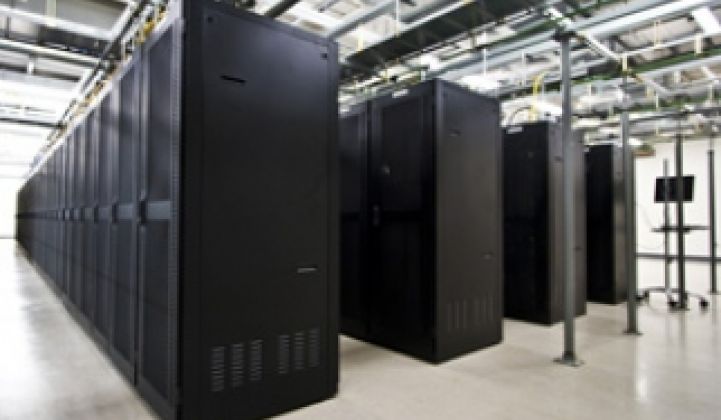It's like installing a nervous system in a data center. The question now is who will do it.
The Redwood City, Calif.-based startup Sentilla Corp. makes wireless sensors to monitor energy, temperature and other data that can feed into a single screen, effectively giving data center managers sensory control over thousands of servers and storage systems that go with them. (see Sentilla Raises $7.5M to Compete in Data Center Power Fray). Other companies have part, but not the whole solution, claims Sentilla CEO Bob Davis.
"Some of them do current, some of them do voltage, and some of them do both. Some of them do it on a plug level, some of them do it on a PDU [power distribution unit] level. It's a smorgasbord of energy information," he said.
Unfortunately for Sentilla, the company won't be alone. Energy management tools and consoles are one of the faster growing segments in greentech. Compared to solar, development is cheap and time-to-market is fast. Even better: data center manager seem primed to invest. Large and small competitors will likely release similar tools, say analysts. If you want to get a sense of how it might evolve, look at the rapid pace in the market for controlling power in buildings and corporate campuses.
Power use, once an afterthought to equipment cost and performance for data centers, is becoming a top concern – a fact that's led to a big push on efficiency from IT equipment to the building systems that keep data centers lit, cooled and powered during blackouts (see GE Looks to Data Center Efficiency and Sun: Data Center Efficiency for Everyone).
Data centers now use about 1.5 percent of the nation's power supply and 2.5 percent of the power in Northern California. Without increased efficiency, the costs for that power could grow to as much as $7.4 billion a year by 2012, according to the Environmental Protection Agency (see Data Centers Could Hit 'Resource Crisis').
"In our surveys, it's the number one challenge for customers," said Jed Scaramella, senior research analyst at IDC. But until recently, "it was never a concern, so there was never a holistic way to monitor and manage the energy within data centers."
As for what Sentilla is offering, it's "a kind of agnostic solution that can monitor every device within the data center regardless of brand," he said. "You can really see everything."
But it won't be the last, he predicted.
"Everyone's got their own solution, because it's a new opportunity," he said. "That's the goal for everybody to get to – one screen."
Martin Reynolds, vice president at Gartner, noted that Hewlett Packard, IBM, BMC and CA dominate the data center IT management console market today, and could be expected to incorporate energy usage data into their offerings. the field also includes people like SynapSense, which has received funds from Bosch and American River Ventures.
"Sentilla may be early, but they've got competition," he said.
Correlating IT equipment performance with energy usage will become a particularly competitive field of endeavor, he noted (see Energy Star for Servers Arrives – And It's a Bit Short).
Davis said he sees Sentilla's interface as a first step toward accomplishing that perhaps by integrating with those IT management consoles.
"What people want is the equivalent to miles per gallon – how many watts per compute cycle," he said.
Sentilla has installed the interface with a number of data center clients, Davis said, including Sun Microsystems. Sentilla's wireless devices use Java-based software and saw their public debut at Sun's JavaOne 2008 conference in San Francisco.
Davis wouldn't name Sentilla's other clients, beyond saying the company was focused on financial services, manufacturing, and health care.
While Sentilla's new interface focuses on IT equipment energy use, the company is seeking to incorporate other data center power systems – chillers, lighting, uninterruptable power supplies – into its interface, he said. Of course, Sentilla's wireless sensors, which have been used in applications including electricity and heat sensing in aluminum smelting plants, could do the job.
But others are seeking to provide that kind of data, including Santa Clara, Calif.-based Power Assure, San Jose, Calif.-based Cassatt and Folsom, Calif.-based SynapSense (see Keeping Facebook From Frying).
And while makers of outlet and PDU monitoring devices may use SNMP, the same does not necessarily hold true for systems to monitor facility systems like lighting and cooling, Reynolds said.
Beyond technical considerations, the disconnect between IT and facility departments at data centers could make integration more difficult, he said.
"It's an interesting technology, it's an important technology, but it's challenged by the way IT works, with facilities controlling the power budget, and IT just being interested in getting the work done," he said.
IT departments may be taking on more of the responsibility for paying for their power use, though, according to a recent survey (see Symantec Report: Green IT Now 'Essential Item').



